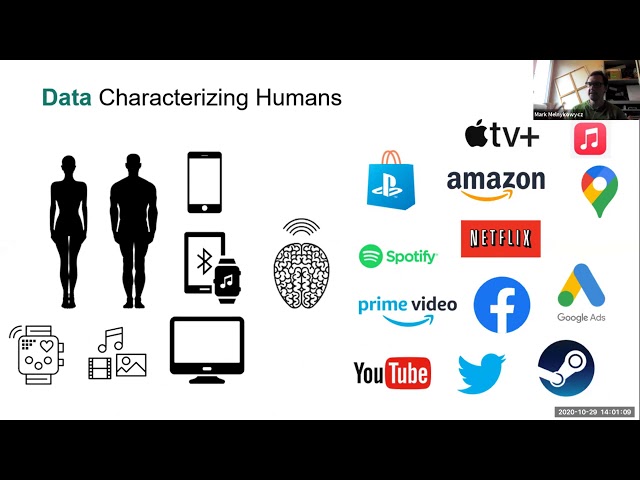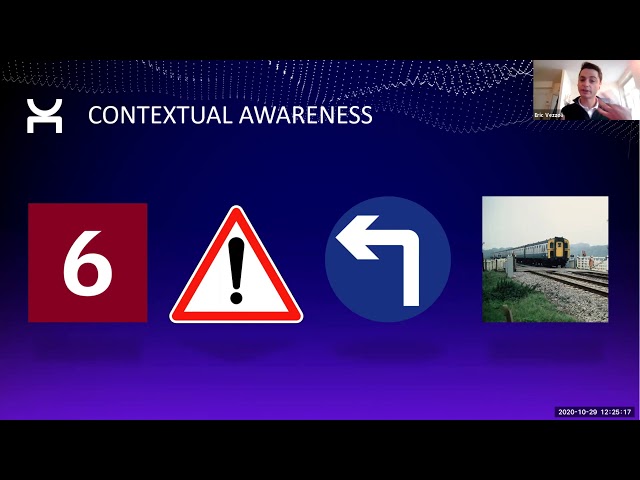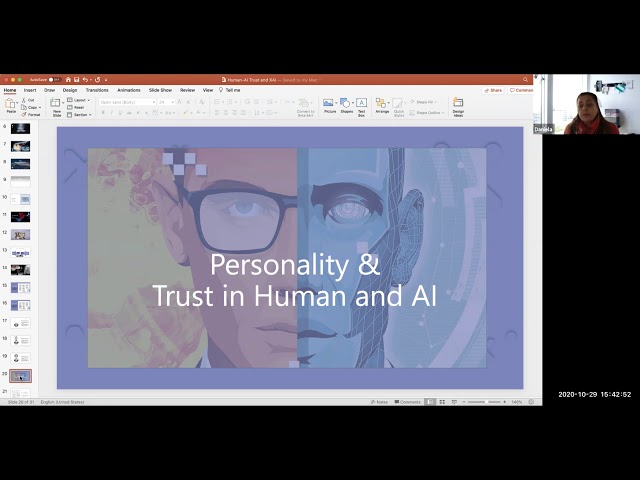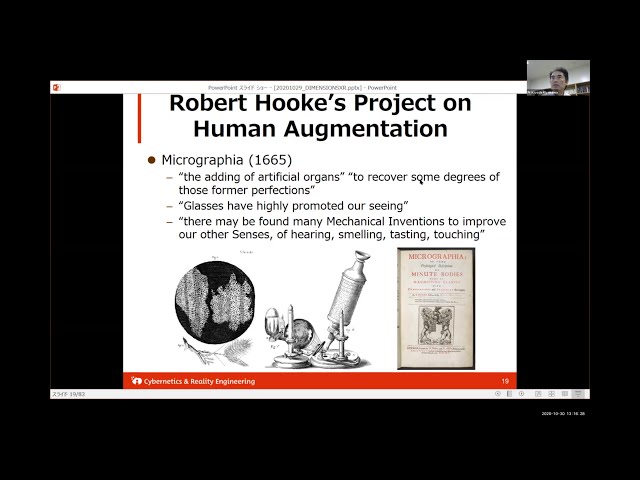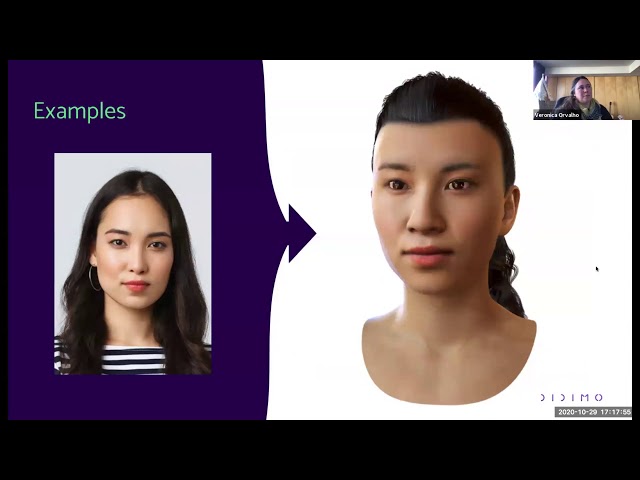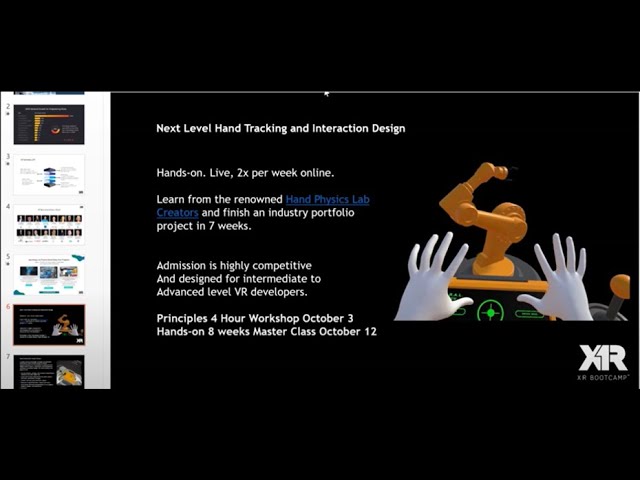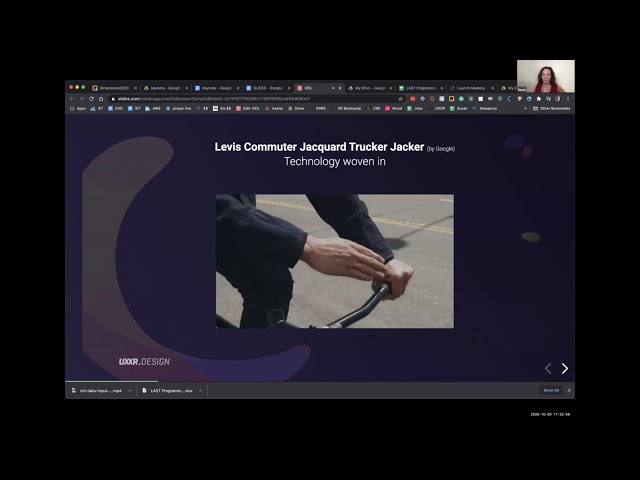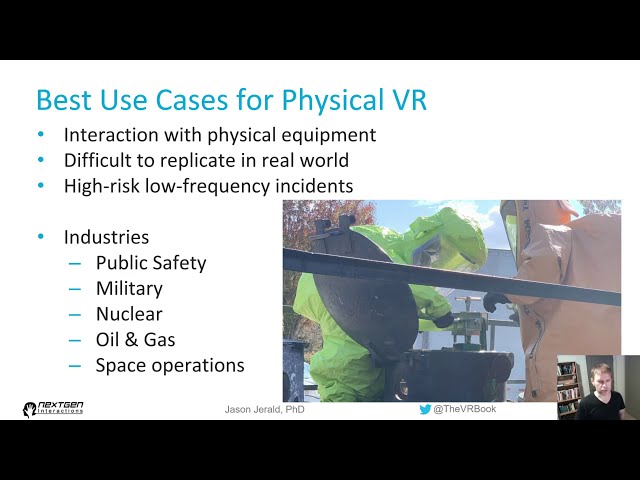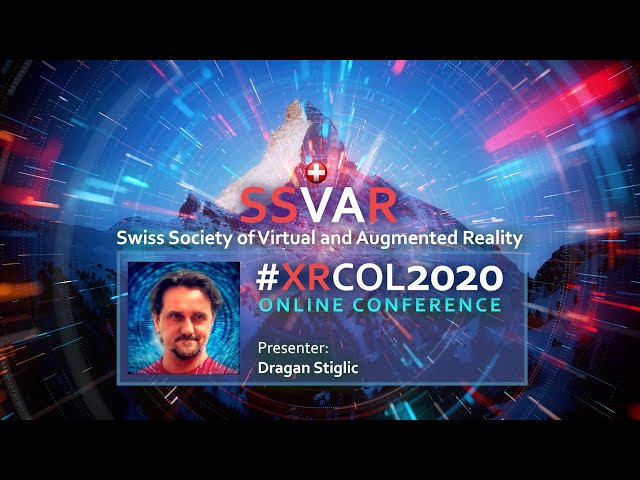XR for sciences
#DIMENSIONSXR2020 / DR MARK MELNYKOWYCZ : Enabling the Internet of Humans
#Abstract The development of immersive technologies over the past decades have focused heavily on the visual/audio replacement or augmentation of user experiences. With the advancement of wearable sensor and motor technologies, the ability to include tactile feedback has steadily increased alongside spatial positioning of the user in an environment. Additionally, smell augmentation has been implemented to limited extents. Neurofeedback is one of the last human data elements to be characterized and integrated into XR experience design. Neurofeedback largely encompasses the characterization of brain activity and associated feedback through one of the other sensory inputs (visual, audio, tactile). This has widely been accomplished through EEG electrodes on the scalp, which allow brain frequency patterns to be acquired and characterized. Although scalp-located EEG technology and devices have been in use for decades, they have largely been used in controlled laboratory settings due to limitations associated with motion artifacts and the need to use electrolytic gel to improve the electrode-skin interface. Recent advances in EEG and materials research have enabled EEG signals to be reliably acquired from inside the ear canal. Due to the stable interface between ear electrodes and the skin in the ear canal, it’s possible to design EEG devices which can be used as every-day devices and integrated into more user experiences. Advanced use cases include adaptive game and experience development. However, by connecting brain metrics to Internet of Things (IoT) networks and device, the Internet of Humans (IoH) foundations can be built to provide a new framework for human computer interaction (HCI) and including in XR environments.
#DIMENSIONSXR2020 / Eric Vezzoli : Haptics in XR: How to create experiences with today technology.
#Abstract The hand interaction with virtual content in XR is mainly mediated by controllers equipped with haptics actuators. Haptics feedback can enhance the perception and the perceived quality of XR content in several applications: gaming, training, marketing among them. One of the issues of haptics in XR today is how to create compelling haptics experiences which are supporting and enhancing the XR content for the use case. The talk will focus on haptics design guidelines for XR, and a practical approach on how to implement and realize them thanks to the haptic composer of Interhaptics.
#DIMENSIONSXR2020 / Dr. Damiela Romano : Human-AI trust, and Implications for Explainable AI (XAI)
#Bio Daniela has received her PhD on supporting naturalistic decisions making with an intelligent serious game in 2002 at Leeds University, Lecturer in Computer Science (2004) & Senior Lecturer (2010) & Virtual Reality Theme Leader at Sheffield. Professor in Computing (2015) & Head of Innovative Research and Enterprise, Manager Virtual Reality at Edge Hill, Senior Teaching Fellow at UCLIC in 2017, Senior Teaching Fellow at UCL Information Studies in 2019. She is interested in interaction & perception of virtual environments, advanced interfaces (BCI, Bio-affective), human – cognitive agent interaction, simulation and prediction of behaviour with large-scale multi-agent systems, telemedicine, gamification and serious games. Skilled in 3D Graphics, E-Learning, Computer Science, Cognitive Science and Learning , Artificial Intelligence, game development. #Abstract In this talk the concept of trust between human and AI is discussed, considering the different forms an AI can have, as well as the difference in human’s personality and the behaviour. In particular, considerations are made on the implications that AI-trust has on the need to explain the AI reasoning and when an explanation is needed and when it might not be necessary.
#DIMENSIONSXR2020 / Prof. Kiyoshi Kiyokawa : “Smart Reality Modulation for Inclusive Society”
This talk of Pr. Kiyoshi Kiyokawa made in October 30th, 2020 has been given during the International Congress of Extended Reality in Sciences (https://dimensionsxr.com) organized by the Swiss Society of Virtual and Augmented Reality (SSVAR - https://ssvar.ch) #Bio Professor at Nara Institute of Science and Technology, leading Cybernetics and Reality Engineering Laboratory (CARE Lab). I received my M.S. and Ph.D. degrees in information systems from Nara Institute of Science and Technology in 1996 and 1998, respectively. I was a Research Fellow of the Japan Society for the Promotion of Science in 1998. I worked for Communications Research Laboratory (current National Institute of Information and Communications Technology (NICT)) from 1999 to 2002. I was a visiting researcher at Human Interface Technology Laboratory of University of Washington from 2001 to 2002. I was an Associate Professor at Cybermedia Center, Osaka University from 2002 to 2017. My research interests include virtual reality, augmented reality, human augmentation, 3D user interfaces, CSCW, and context awareness. I have been involved in organizing IEEE and ACM conferences, such as IEEE International Symposium on Mixed and Augmented Reality (ISMAR), IEEE Virtual Reality, IEEE International Symposium on Wearable Computers (ISWC), IEEE Symposium on 3D User Interfaces (3DUI), and ACM Virtual Reality Software and Technology (VRST). #Abstract VR and AR technologies can be used to overcome physical constraints and maximize individual abilities and promote social participation and contribution. For example, it is possible to redesign the inherent visual ability using advanced head-mounted displays. In this talk, I will introduce the technology for flexible modulation of reality and its future prospects, along with various research examples that I have been involved in. In particular, I will introduce examples of improving QoL in various scenes of daily life using intelligent real-time video conversion using technologies such as deep learning. ----------- The intro video has been made by Dragan Stiglic: https://draganstiglic.myportfolio.com/ The director: Mohamed Jean-Philippe Sangaré Founder and CEO of SSVAR https://www.linkedin.com/in/msangare/
#DIMENSIONSXR2020 Veronica Costa Orvalho: The art and science behind Digital Humans
This talk of Veronica Costa Orvalho made in October 30th, 2020 has been given during the International Congress of Extended Reality in Sciences (https://dimensionsxr.com) organized by the Swiss Society of Virtual and Augmented Reality (SSVAR - https://ssvar.ch) #Title The art and science behind Digital Humans The intro video has been made by Dragan Stiglic: https://draganstiglic.myportfolio.com... The moderator: Konstantin Startchev VP of SSVAR Chief editor of the journal Dimensionsxr https://www.linkedin.com/in/konstantin-startchev-95a456/
#DIMENSIONSXR2020 Ferhan Ozkan, Dennys Kuhnert,Roger Kung :XRBootcamp’s talk
This talk of Dr. Walter Greenleaf made in October 30th, 2020 has been given during the International Congress of Extended Reality in Sciences (https://dimensionsxr.com) organized by the Swiss Society of Virtual and Augmented Reality (SSVAR - https://ssvar.ch) Skill-to-Job Advanced XR Modules for Universities (Physics Based Interactions, Rendering Optimization, Remote AR) The XR skills Gap (by quality & quantity)Understanding the skills and tools required by industry todayHow to prepare students and XR enthusiasts with advanced skills?Mentorship & Peer to Peer learning through online toolsXR Job Opportunities for junior and senior XR roles Ferhan Ozkan (Co-founder, XR Bootcamp) Dennys Kuhnert, COO and Founder of Holonautic Roger Kung, CEO and Founder of Holonautic XR Bootcamp Lightning Talk: Advanced Interaction Design & Hand Tracking You will learn how to improve interaction design and hand-tracking! Attendees will learn time-saving tips and tricks when prototyping VR apps and learn some fundamental practices for building lifelike hand interactions. -- The intro video has been made by Dragan Stiglic: https://draganstiglic.myportfolio.com... The interviewer: Mohamed Jean-Philippe Sangaré Founder and CEO of SSVAR https://www.linkedin.com/in/msangare/ Moderator: Dr Takoua Ben Issa https://www.linkedin.com/in/dr-takoua-ben-issa-001751120/
#DIMENSIONSXR2020/Susan Oslin : Naturally Intuitive, Accessible: What’s natural about interfacing XR
#Abstract The popularity and instant success of touch screens corresponded to the innate desire for humans to experience interactions with a computer in a natural way. It’s intuitive to tap, swipe, and pinch on a two dimensional surface. When the system responses are logical and meet our expectations it feels natural. Consider the third dimension of virtual reality and things get more interesting. How natural Is it to hold a controller and use the grip button to grab an object? Of course it’s more natural to reach out your hand to grab an object directly, but given today’s technology, that too is fraught with complexities that result in constraints that don’t feel all that natural. Step into the near future of spatial computing where we will be surrounded by a proliferation of sensors, data, and artificial intelligence; where virtual objects will coexist with actual objects in the physical world. Here, the challenges of designing a natural human interface expand exponentially. But so do the possibilities. Suzan will take you through her current research, explorations and imaginations in interaction design for XR and share what she’s learned along the way about natural interface design, the constraints of the technology, accessibility and smart interfaces. The intro video has been made by Dragan Stiglic: https://draganstiglic.myportfolio.com/ The director: Mohamed Jean-Philippe Sangaré Founder and CEO of SSVAR https://www.linkedin.com/in/msangare/
#DIMENSIONSXR2020 / Jason Jerald : Human Centered Design with Physical Props
#Abstract Whereas consumer virtual reality (VR) systems can support scenarios that are quite visually and aurally realistic, most of today’s VR hardware is lacking when it comes to physical touch. Although not widely done, enhancing existing VR systems with physical props and other physical cues can enable users to feel what they see. This can lead to users feeling more grounded and trusting of the virtual world as if they are actually present. This talk will explore where such physicality is important and present some example props and use cases. Attendees will leave the talk with ideas of why and how they might incorporate physicality into their XR simulations.
SSVAR #XRCOL2020 : XR – what’s that really, and what can you do with it
#XRCOL2020 Online conference : XR(eXtended Reality) for collaboration, online learning, conferences & remote working Presentation given during the #XRCOL2020 Online conference organised by SSVAR (https://ssvar.ch) #Speaker Dragan Stiglic - Creative Director & P.M., 3D, UX, UXR, AR, XR Expertise #Abstract Trying to extend the ‘’XR thinking’’ beynd the current hype, this short talk will raise some questions about the current trends, ignite some new perceptions, and try to predict where is this amazing new medium heading.
#XRCOL2020: Accessible XR
#XRCOL2020 Online conference : XR(eXtended Reality) for collaboration, online learning, conferences & remote working Presentation given during the #XRCOL2020 Online conference organised by SSVAR (https://ssvar.ch) #Speaker Alexandra Hussenot - CEO Immersionn, VR Discovery. Member of UK5G working group. UK Lead Women in Immersive Tech Abstract: VR is not for everyone. According to Statista, there are only 171 million active users worldwide. We can compare this with 3.8 billion smartphone users. In 2020 however, there is an increasing demand for immersive digital products that keep us connected while adopting new social distancing rules. Connected VR headsets on Steam have more than doubled in the past three months for example. In December 2019, Immersionn released first an Immersive journalism platform that showcases some of its capabilities before customers started to ask for similar products for their businesses. In May 2020, Immersionn released its first B2B product, the "Web Twin" for T-Systems. Web Twins offers a superior web experience than a traditional web page, as a step before taking engaged visitors to VR. Every Web Twins can be upgraded to VR experiences. At the same time Immersionn started to actively use platforms like Mozilla Hubs for its recruitment and a customized world in Altspace for team and client events. In this talk, we will share our positive experiences with these platforms and their limitations.

